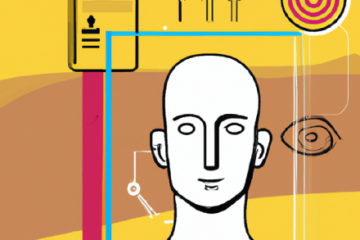Unfolding The Narrative of CX: A Deep Dive into Its Evolution and Future Trajectories
Unfolding The Narrative of CX: A Deep Dive into Its Evolution and Future Trajectories

Customer Experience (CX) has become a pivotal force in shaping modern business strategies. Over the years, CX has undergone a metamorphosis, driven by technological innovations, shifting consumer behaviors, and a relentless pursuit of excellence. Let’s delve into the historical evolution, pivotal innovations, and future trends that define the ever-evolving landscape of CX.
The Genesis of CX
After the post World War 2 boom in consumerism, market research and consumer behavior studies quickly evolved to encompass all aspects of the customer journey. It is during these times during the 1960s that the term Customer Experience started gaining prominence with a strong focus on customer satisfaction, loyalty and retention. One of the early pioneers and adopters of customer experience were Rogers Research, a consultancy specifically dedicated to using customer satisfaction scores to improve employees’ performance. During these times CX strategies were devised on largely observational data gathered through rudimentary means with a focus to improve the four Ps of Marketing (Product, Place, Price and Promotion).
The 360 degree view of customers
By the 1990s the software revolution had begun and this fueled the rise of customer relationship management (CRM) systems which allowed businesses to manage customer data and interactions more effectively. CRMs enable businesses to record bespoke data and view more than just post-purchase satisfaction and incorporate further aspects such as quality, communication and pricing into the discussion. This has enabled the foundation of the “360 degree view of customers”.
Technological Inflection Point
The 21st century witnessed an unprecedented surge in technological innovation, fundamentally reshaping the CX landscape. The advent of the internet democratized access to information and empowered consumers like never before. Businesses capitalized on this digital revolution, harnessing data analytics to expedite research and test hypotheses theorized before.
This democratic abundance of data enabled psychologists to interlink customer behavior with business outcomes. In fact, Daniel Kahneman was awarded a Nobel Prize in 2002 for his research on how psychological and sociological factors impact business strategy.
According to a report by Salesforce, 84% of customers said the experience a company provides is as important as its products and services.
Enter the Net Promoter Score (NPS)®
By the late 20th century businesses started recognizing the now proven, intrinsic link between customer satisfaction and long-term profitability. In 2003, Bain & Company introduced the Net Promoter Score (NPS)®, a revolutionary metric that gauges customer loyalty and advocacy. Based on a single question – “How likely are you to recommend us to a friend or colleague?” – NPS® gained widespread adoption due to its simplicity and effectiveness.

According to research by Bain & Company, increasing customer retention rates by just 5% could lead to a profit increase of 25% to 95%. This paradigm shift laid the groundwork for a more holistic approach to CX.
Businesses across industries embraced NPS® as a cornerstone of their CX strategies, leveraging it to measure customer satisfaction, identify areas for improvement, and drive business growth.
The Rise of Social Media
The advent of social media platforms such as Facebook, Twitter, and Instagram ushered in a new era of customer engagement and brand interaction. Consumers gained a powerful voice, capable of shaping brand perceptions and influencing purchasing decisions on a global scale. Businesses leveraged social media as a dynamic channel for customer feedback, brand advocacy, and real-time communication. With the rise of “influencer marketing”, targeting niche customer segments with high levels of customer stickiness had become possible.

According to Hootsuite, 73% of marketers believe that their efforts through social media marketing have been “somewhat effective” or “very effective” for their business.
Shift Towards Customer-Centric Culture
As competition intensified and consumer expectations soared with globalization and a growing abundance of alternatives, businesses realized the importance of placing customers at the heart of their operations. CX ceased to be a siloed function and emerged as a strategic priority ingrained in organizational culture. Companies embraced a customer-centric mindset, fostering empathy, innovation, and continuous improvement across all facets of their customer journey to address customer churn.
According to Deloitte, customer-centric companies are 60% more profitable compared to companies that are not focused on their customers.

Looking Ahead
The future trajectory of CX is poised to be shaped by several key trends and emerging technologies. Here are some pivotal areas that will define the evolution of CX in the years to come:
Hyper-Personalization:
With growing abundance and commoditization of products due to advances in manufacturing technologies and increasingly interconnected supply chains, more customers wish to “stand out from the crowd”. Advances in AI and machine learning will enable unprecedented levels of personalization, allowing businesses to anticipate customer needs and deliver tailored experiences in real-time.
Omnichannel Integration:
The Covid-pandemic raised into prominence the importance of an omnichannel presence for brands. The lines between physical and digital channels will continue to blur, necessitating seamless integration across all touchpoints to provide a unified customer experience.
Voice and Conversational Interfaces:
The proliferation of voice assistants and chatbots will revolutionize customer interactions through “humanization”, offering intuitive and natural language interfaces for engaging with brands as if they were a sentient entity.
Ethical Data Usage:
With growing concerns around data privacy and security, businesses will need to prioritize ethical data practices and transparent communication to build trust with customers.
Augmented Reality (AR) and Virtual Reality (VR):
The future of CX to a great degree shall be built in the Metaverse. AR and VR technologies will unlock immersive brand experiences, allowing customers to interact with products and services in entirely new ways.
The lines between physical and digital channels will continue to blur, necessitating seamless integration across all touchpoints to provide a unified customer experience.
In Conclusion
The evolution of Customer Experience is a testament to the dynamism and adaptability of modern business practices. From its humble beginnings to its current state of prominence, CX has undergone a remarkable transformation driven by innovation, customer-centricity, and technological advancements. As we look to the future, the journey of CX continues, guided by a relentless commitment to delivering exceptional experiences that delight and inspire customers at every turn.
Got questions? Contact us to get a detailed understanding and a demo from one of our CX experts.

